Learn to make authentic, easy miso soup in 10 minutes with one pot! Customize this basic recipe using what you have in the pantry or fridge for a comforting bowl of goodness with your lunch or dinner.
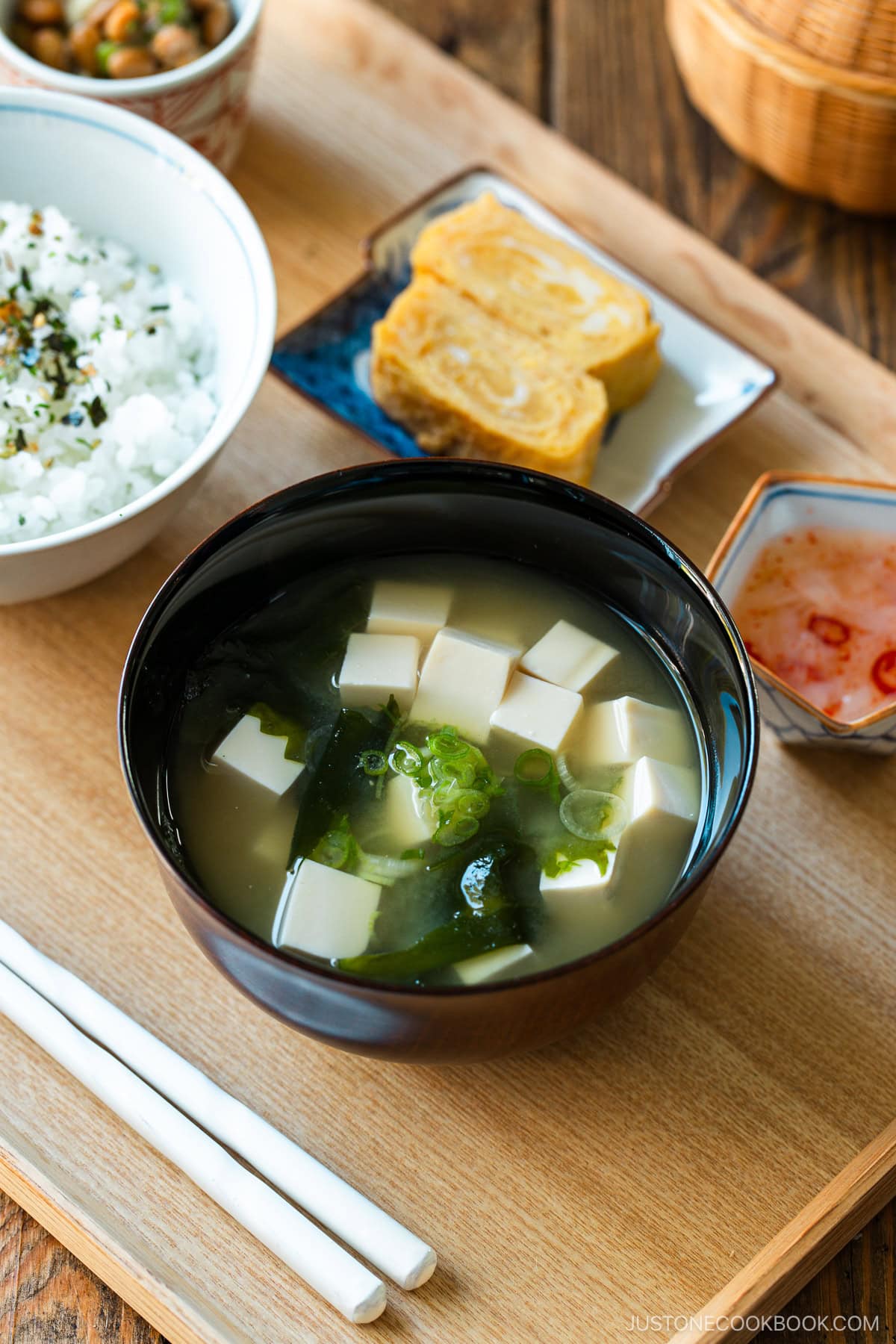
Learning how to make miso soup properly is a basic skill for all Japanese home cooks. It is one of the most important recipes I’ve shared on Just One Cookbook. Life is good with a comforting bowl of miso soup!
For a detailed guide on miso soup, I recommend reading my comprehensive Miso Soup post.
Why This Recipe Works
Even though you’re making this recipe with an electric pot in the college dorm, you can make excellent miso soup if you follow these four key points:
- Use dashi packet: Use the dashi packet over dashi powder if you only have 10 minutes to make the miso soup. No vegetable or chicken broth. You must use dashi, and do not skip and use water. You can get a dashi packet on Amazon.
- Don’t overcook the tofu: Tofu is the star of the ingredient in this classic miso soup. You want the taste and texture to be just right. Did you know tofu is edible out of the package? You don’t need to cook it but gently warm it up. When you overcook it, it changes the texture and it becomes hard and loses its texture and flavor.
- Add miso right before serving: Because miso soup is most fragrant, preserve the miso’s aroma until you’re ready to serve. Since you can’t let the miso soup boil, which ruins its flavor, it’s best to heat just the soup broth (without miso paste in it) till simmering hot first. Then, add the miso paste and serve.
- Do not let the miso soup boil: When serving miso soup for the first time, heat the soup until really hot, add the miso, and then serve right away. When reheating miso soup, stay in the kitchen, and turn it off as soon as miso soup starts to simmer. Do not let the miso soup boil as it will taste sour.
Once you try this homemade recipe, you’ll never look back! It will taste much better than the one from restaurants!
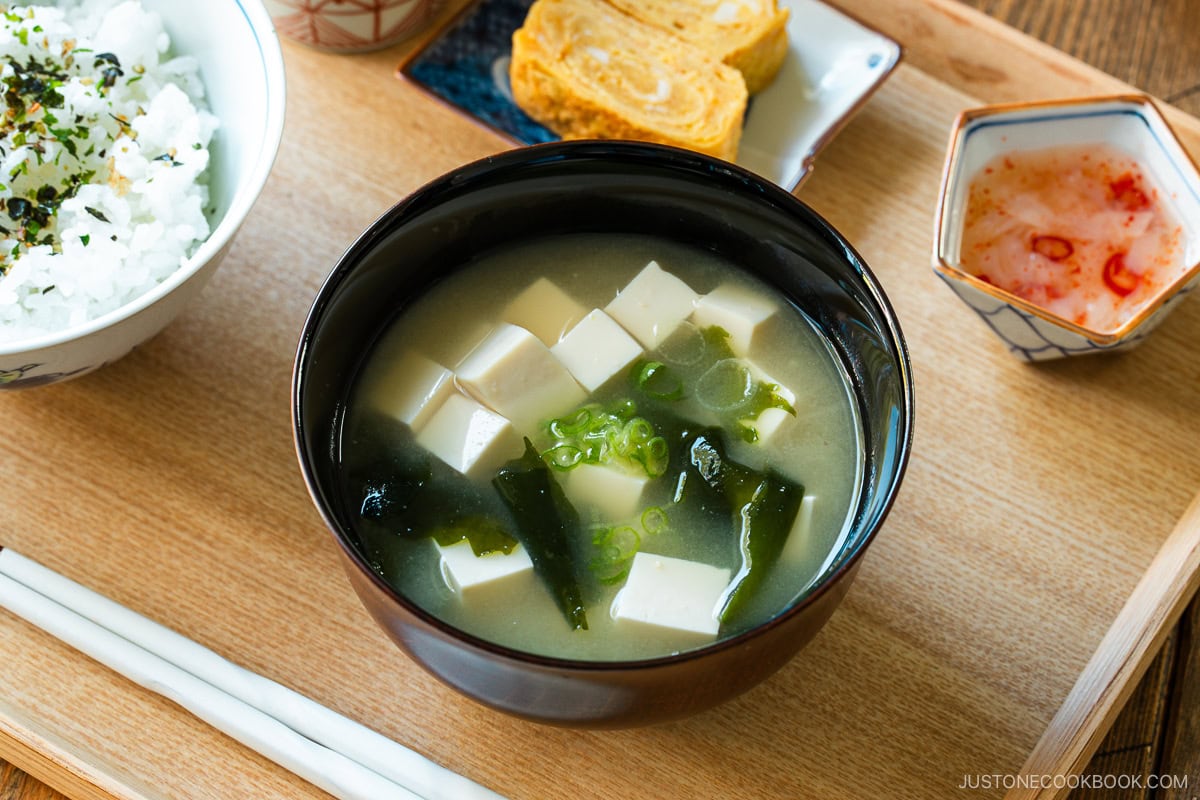
Ingredients for Miso Soup
- Water
- Dashi packet
- Soft/silken tofu
- Miso — The quality of the miso makes a big difference. My favorite brand of miso is Hikari Miso, and you can find their products in Asian/Japanese supermarkets or on Amazon.
- Dried wakame seaweed
- Green onion/scallion for garnish
Find the printable recipe with measurements below.
Substitutions
- Dashi packet: As I mentioned earlier, the dashi packet is the most convenient way to make dashi, and it produces a much more flavorful soup stock than one made with dashi powder. However, if you can’t get the packet, you can use the powder or make dashi from scratchwhich takes about 20 minutes.
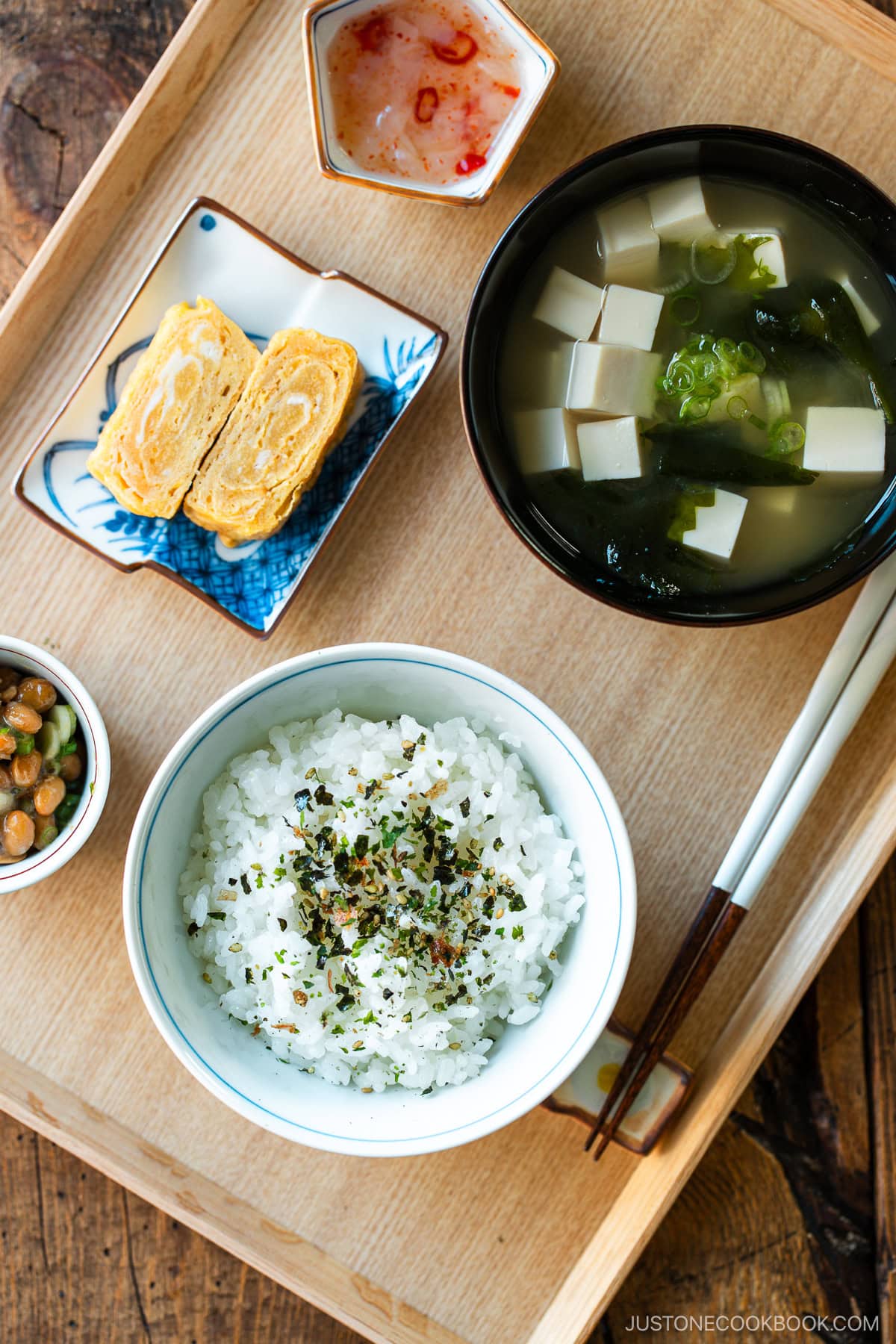
How to Make Miso Soup
Find my detailed cooking tips in the printable recipe below.
- Prepare the ingredients: Thinly slice the green onions and cut the tofu into small cubes.
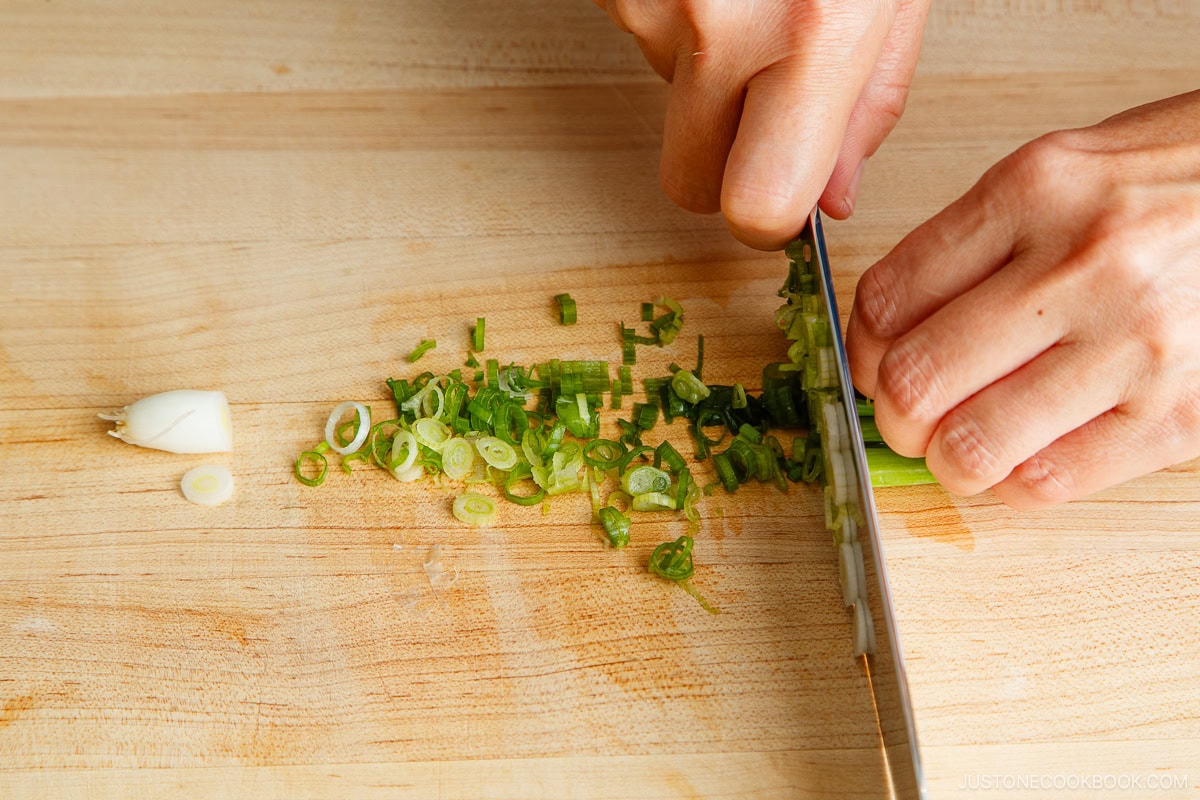
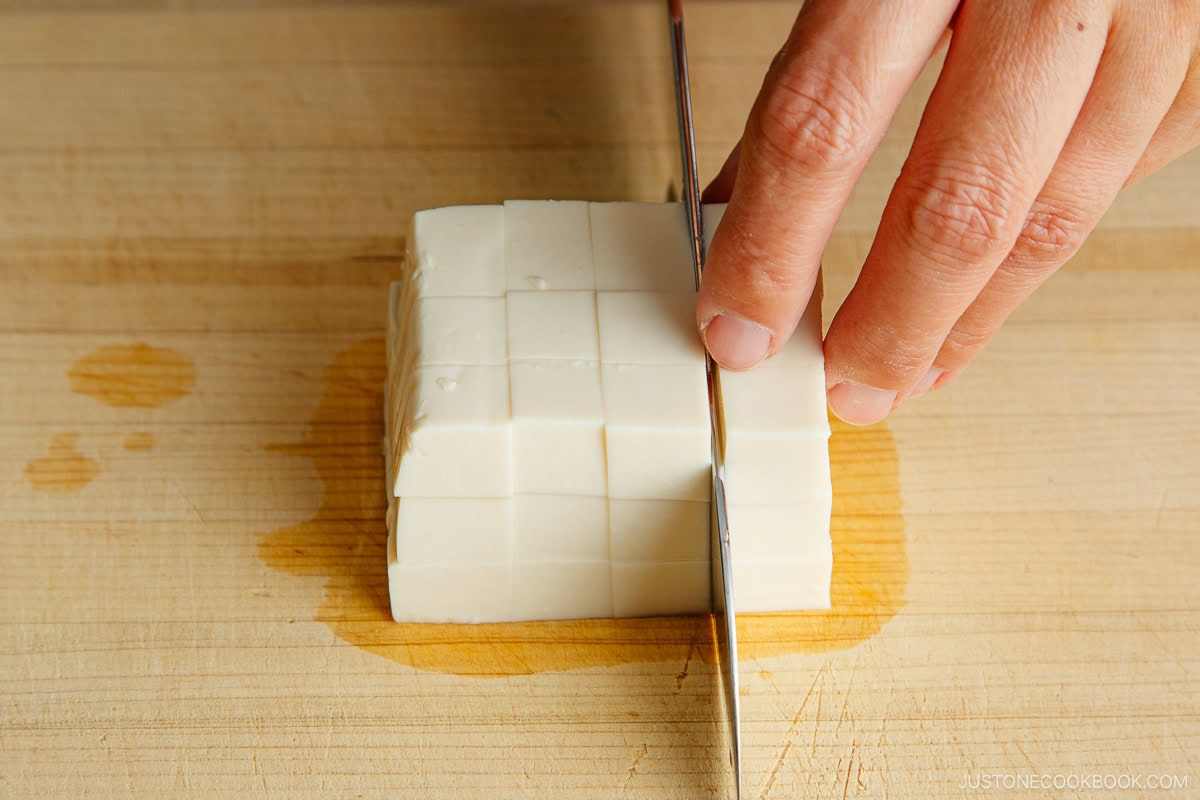
- Make dashi: Add water and the dashi packet in a pot. Cover and bring it to a simmer. Once boiling, let it simmer for 2-3 minutes, shaking the packet a few times. Once finished, discard the packet. If you’re using dashi powder, add the powder to boiling water. Now dashi is ready to use.
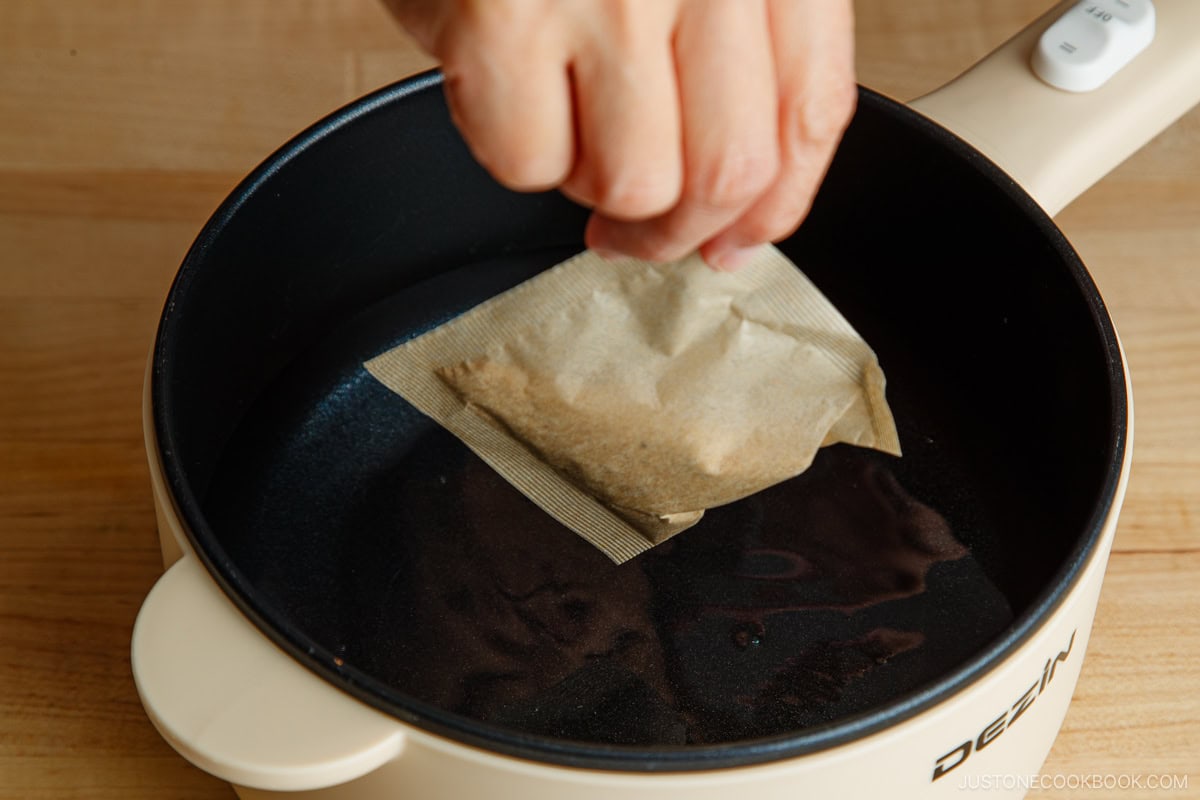
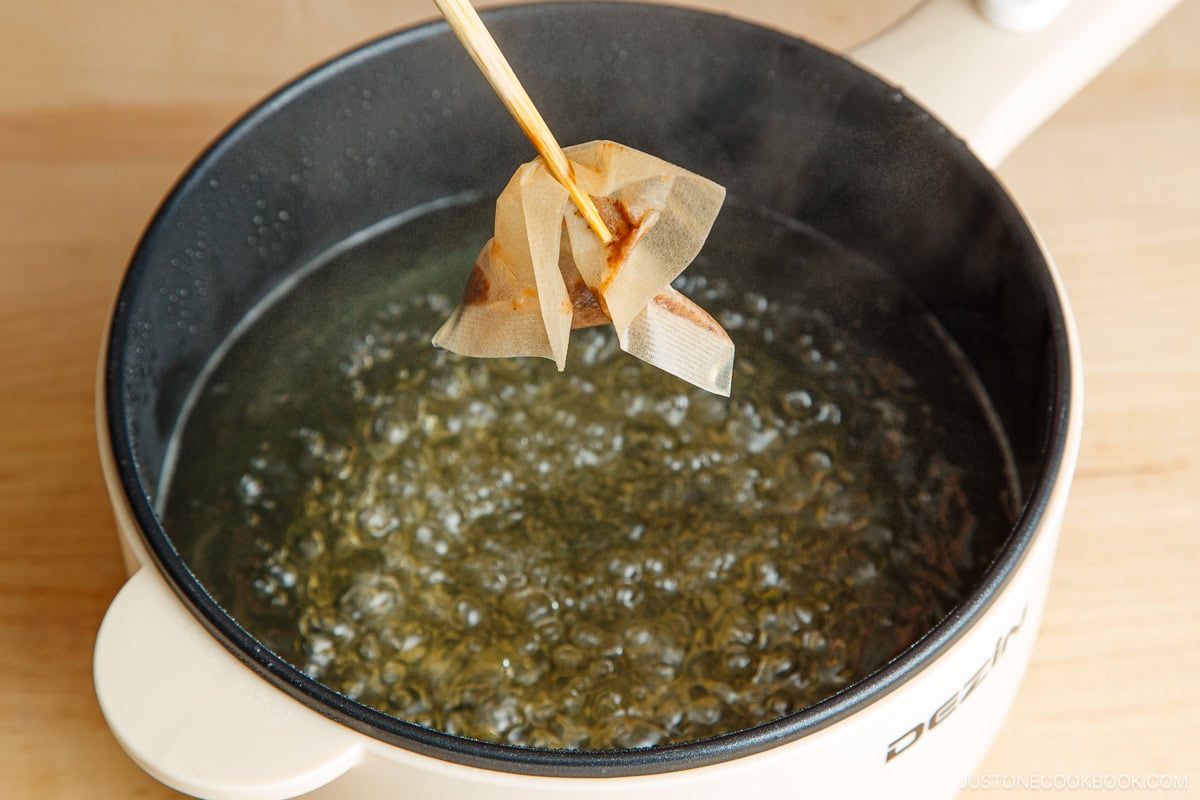
- Make miso soup: Add the tofu and wakame seaweed. Tofu needs to just warm up. Add miso right before serving.
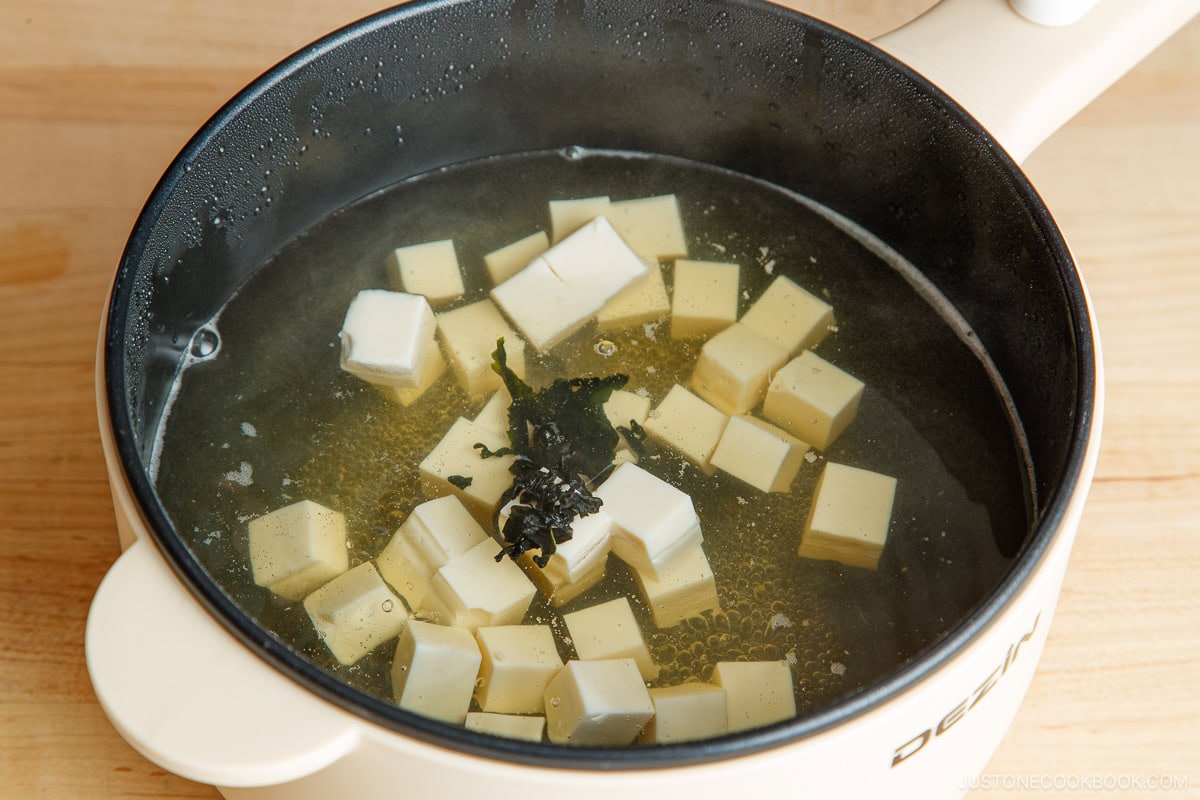
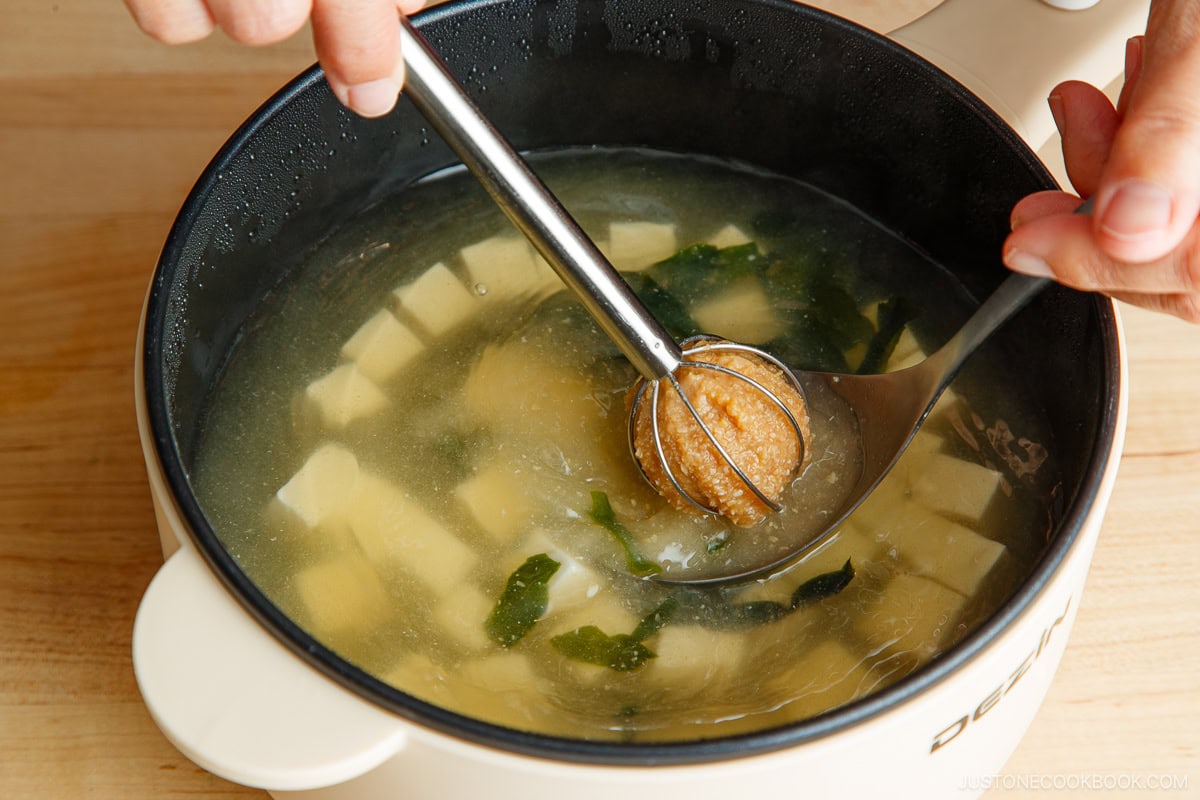
- Serve: Garnish with green onions and serve.
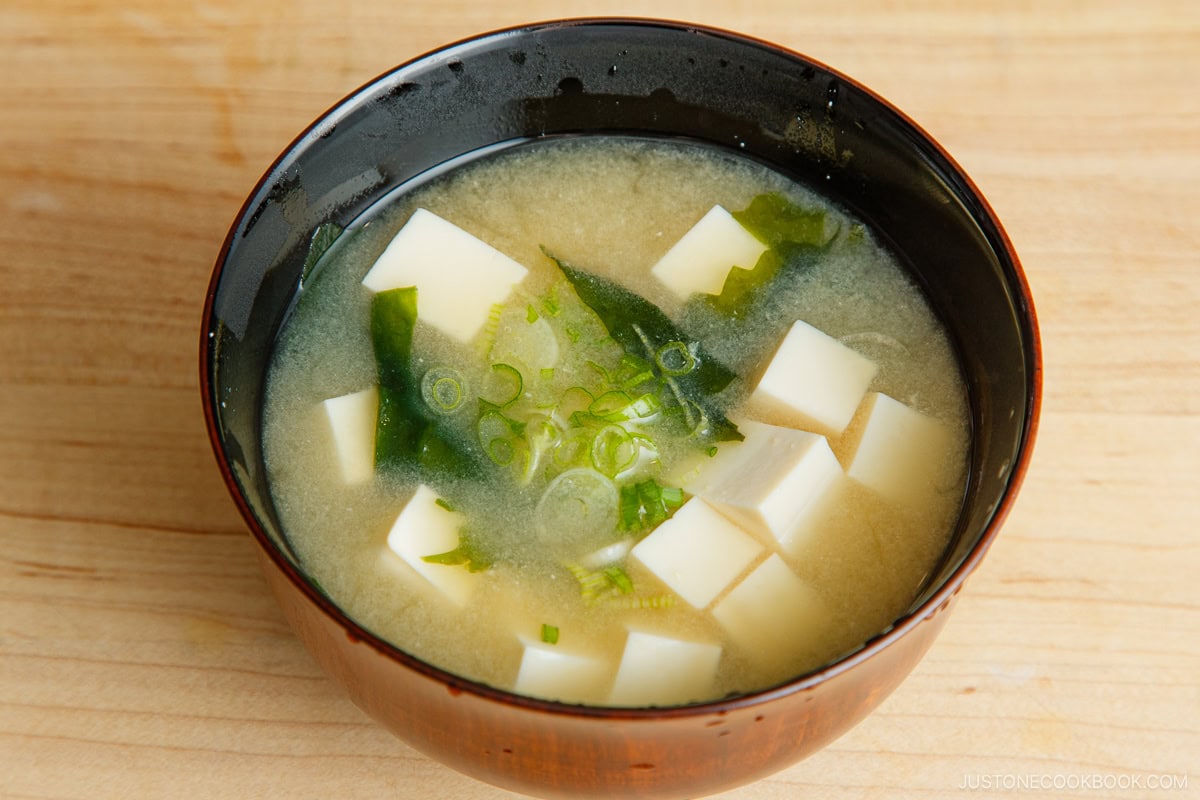
Nami’s Recipe Tips for Success
- Cut the tofu into 1 cm (about ½ inch) cubes. It’s an ideal size for miso soup. If you use a small cutting board, it’s much easier to transfer the tofu into the pot.
- As a general rule, one tablespoon (18 g) of miso paste is sufficient for one bowl of miso soup (which holds 200 ml of dashi). Some miso pastes might be saltier than others, so start with less, and you can always add more after tasting.
- Let the chunk of miso dissolve completely in a ladle, or a miso strainer—never add it directly to the soup! No one wants to find a salty chunk of miso in a soup!
Variations and Customizations
You’re probably familiar with the classic tofu and wakame miso soup; however, it is easily customizable!
- Use ingredients you have on hand! For inspiration, use this list of miso soups as your guide. I’ll update it each time I share a new recipe.


What to Serve with Miso Soup
- As an ichiju sansai meal – For the Japanese “One Soup Three Dishes” style meal, I served miso soup with steamed rice, natto (fermented soybean), 3-Ingredient Tamagoyaki (Japanese rolled omelette), and a scallop side dish from the Japanese grocery store. All my tableware is from my shop, JOC Goods!
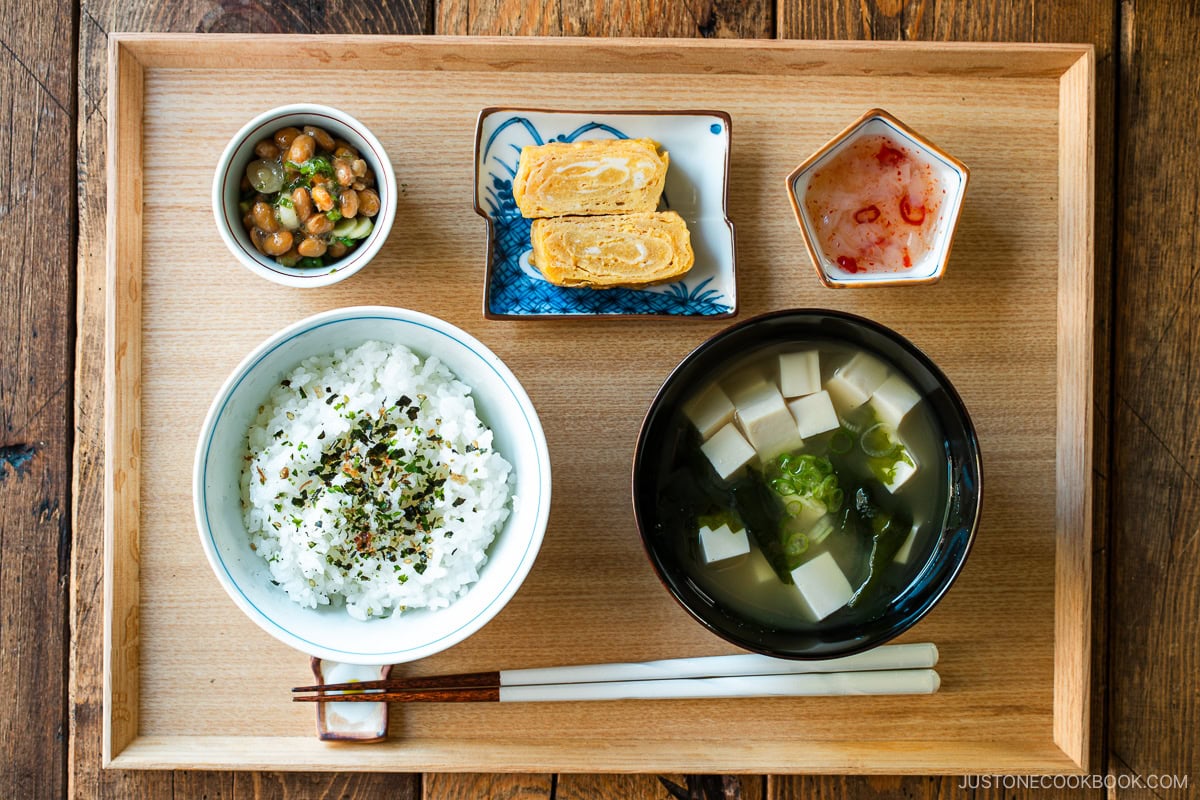
Storage and Reheating Tips
It’s best to consume miso soup immediately, as it will lose its aroma and flavor over time. However, if you have leftovers, here are instructions on how to store them.
- To store: Once miso soup is cooled to room temperature, store it in an airtight container and refrigerate immediately for up to 2 days.
- To freeze: I don’t recommend freezing miso soup because the flavor will deteriorate quickly. But you can freeze it for up to 1-2 weeks. If you do, remove the tofu as its texture changes when frozen.
- To reheat: For the best results, bring the soup to a simmer (190°F/88°C) and NEVER boil it. Boiling will cause the miso soup to lose its flavor and aroma. Also, don’t overcook the tofu as it will change the texture and flavor.
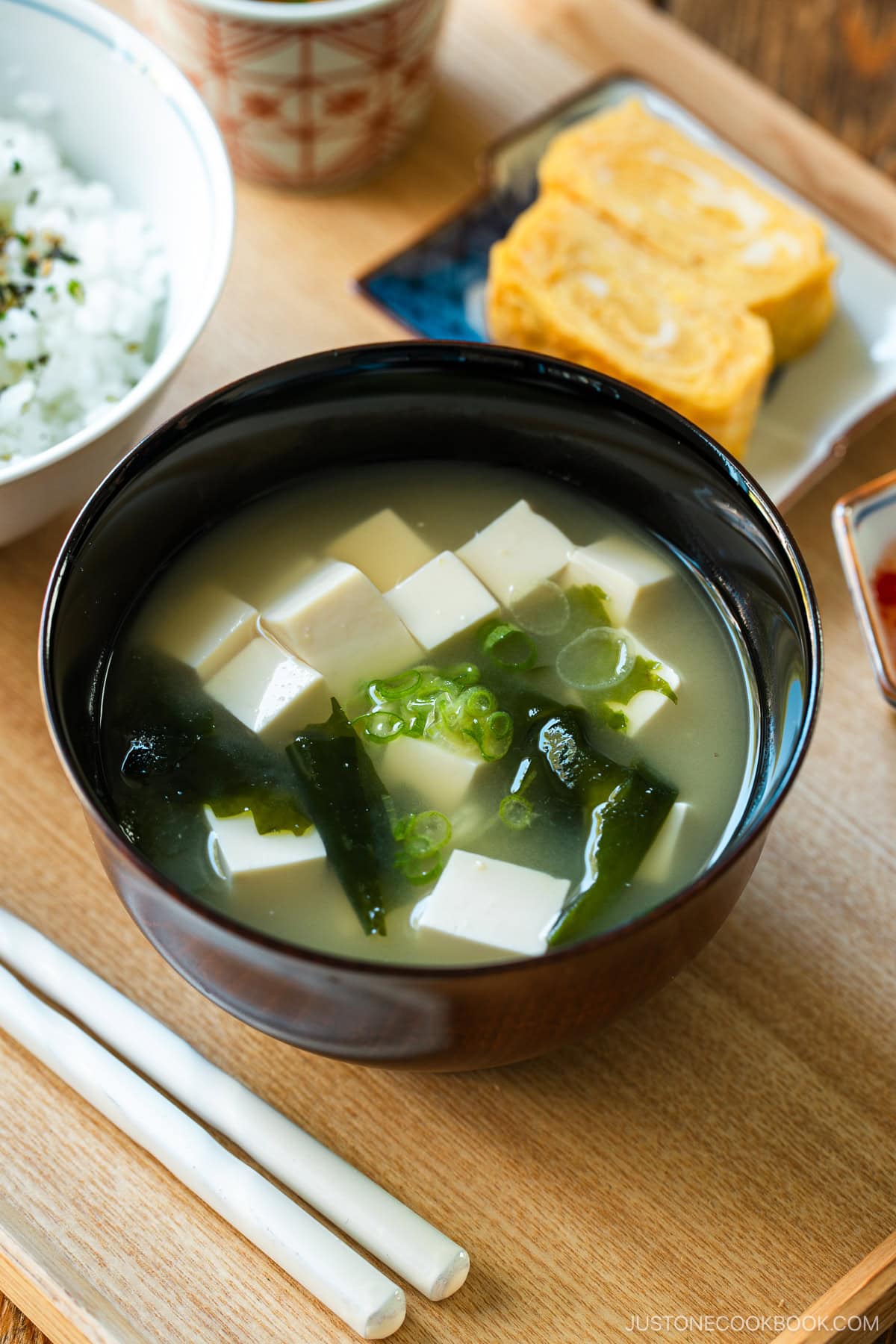
Frequently Asked Questions
Dashi, or Japanese soup stock, is the foundation of many Japanese dishes, including miso soup. I have a comprehensive blog post about different kinds of dashi that you might want to check out.
Dashi is typically made from kombu (seaweed) and katsuobushi (bonito flakes), and it only takes less than 20 minutes to make from scratch. However, the most convenient, quick & easy method without sacrificing the authentic flavor is to use a dashi packet.
The dashi packet is filled with umami-rich ingredients, and the method is similar to making tea. You just steep the dashi packet in water for a few minutes, and your soup stock will be ready to use.
Never use chicken or vegetable broth for miso soup. Dashi has a delicate flavor and is full of umami, which is key ingredient in making authentic miso soup.
I recommend the Kayanoya brand, which you can buy from local Japanese markets or on Amazon.
Since dashi packets or dashi powder contains fish, you will need to make vegan dashi from scratch instead. Alternatively, buy the Shimaya brand’s kombu dashi powder on Amazon, which is vegan-friendly.
I’d recommend starting with white miso, which has a slightly sweet, mild, mellow flavor. Then, try different types from there. Red miso tends to have bold flavors, which I enjoy pairing with protein and more savory ingredients. You can read more about miso on my pantry page.
More 10-Minute Easy Recipes You’ll Enjoy
To learn how to cook simple, fast, and affordable meals using a versatile electric cookercheck out some of our 10 Minute College Meal Series below:
Prevent your screen from going dark
To Store
-
It‘s best to consume all the miso soup right away because it will lose its aroma and taste as time passes. Let the soup cool to room temperature and then store in an airtight container for up to 2 days in the refrigerator. You can freeze miso soup for up to 2 weeks, but remove the tofu as its texture changes when frozen. Reheat in a pot over medium heat until just hot, but do not boil it. Miso loses its nutrients, flavor, and aroma at high temperatures.
©JustOneCookbook.com Content and photographs are copyright protected. Sharing of this recipe is both encouraged and appreciated. Copying and/or pasting full recipes to any website or social media is strictly prohibited. Please view my photo use policy here.

